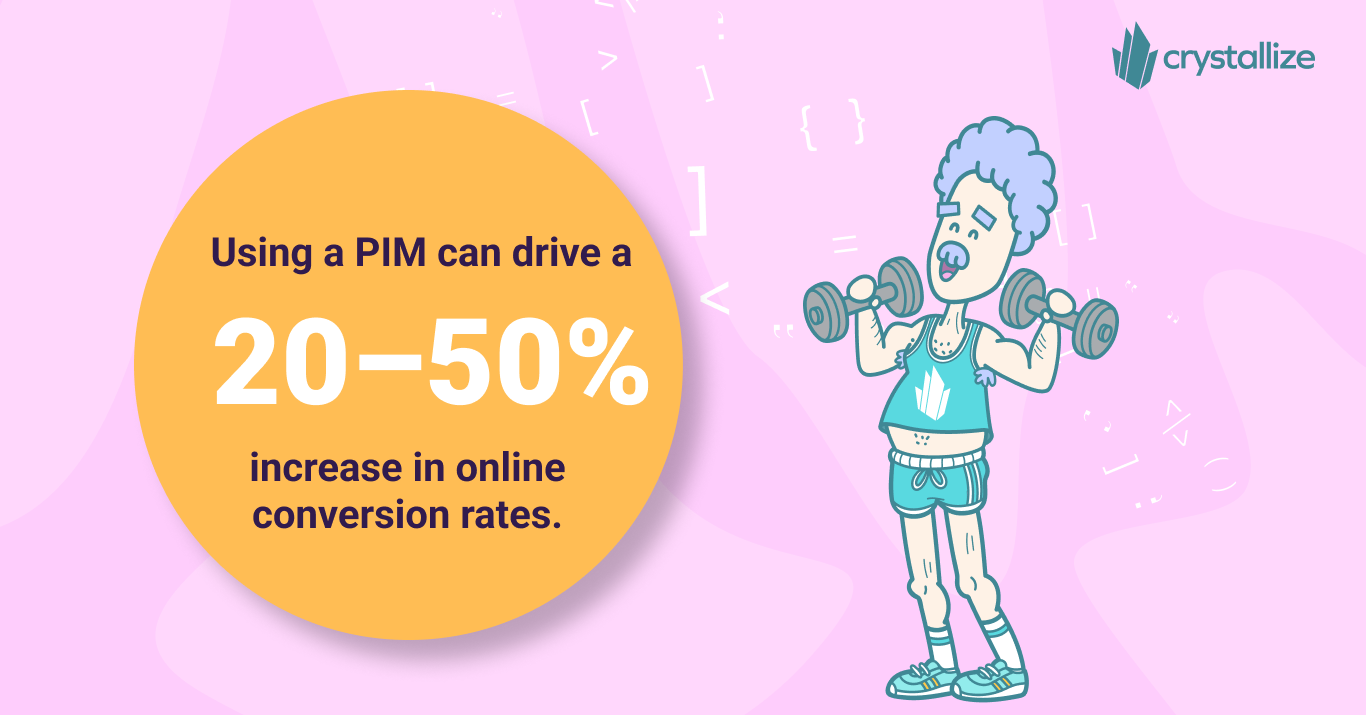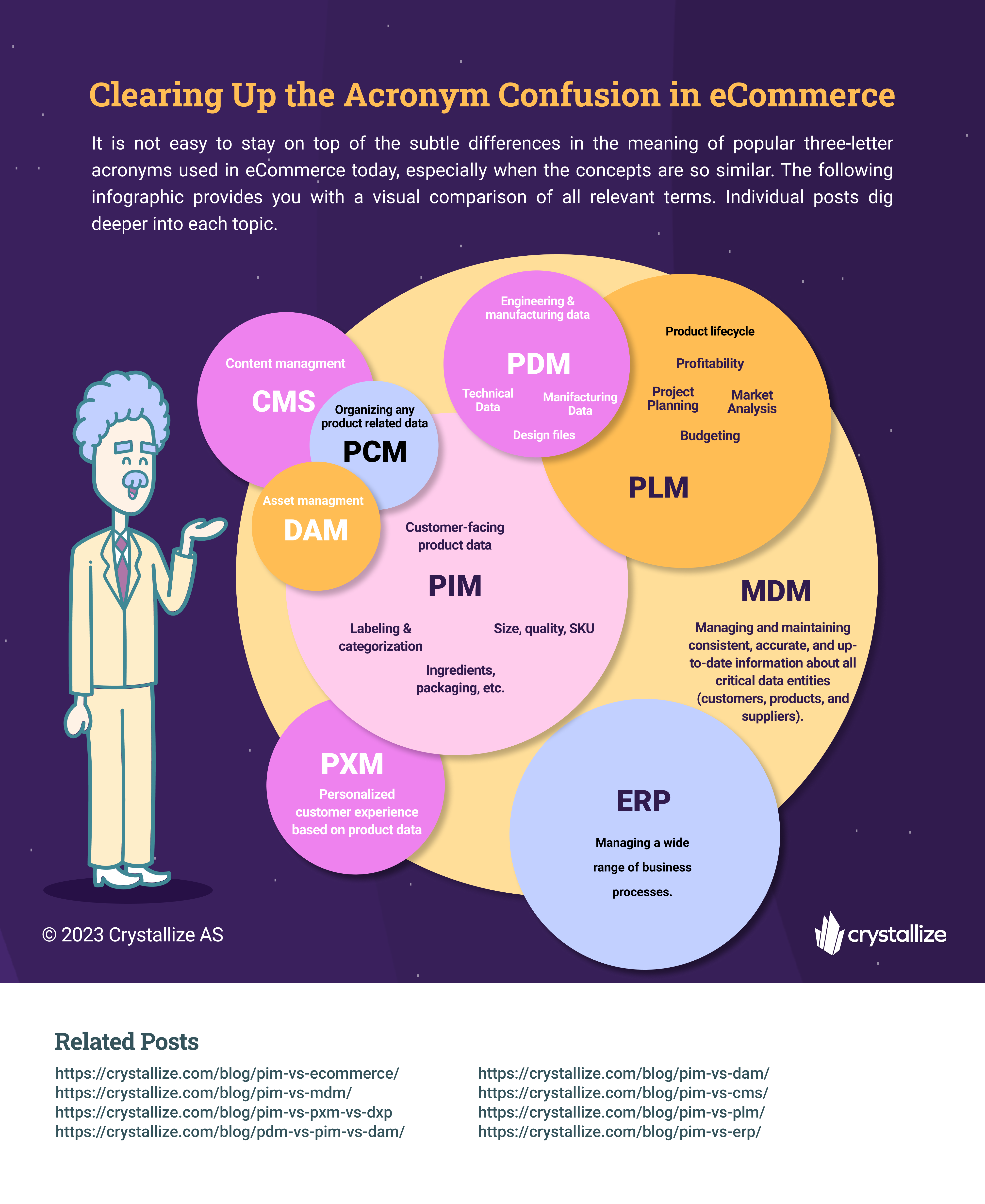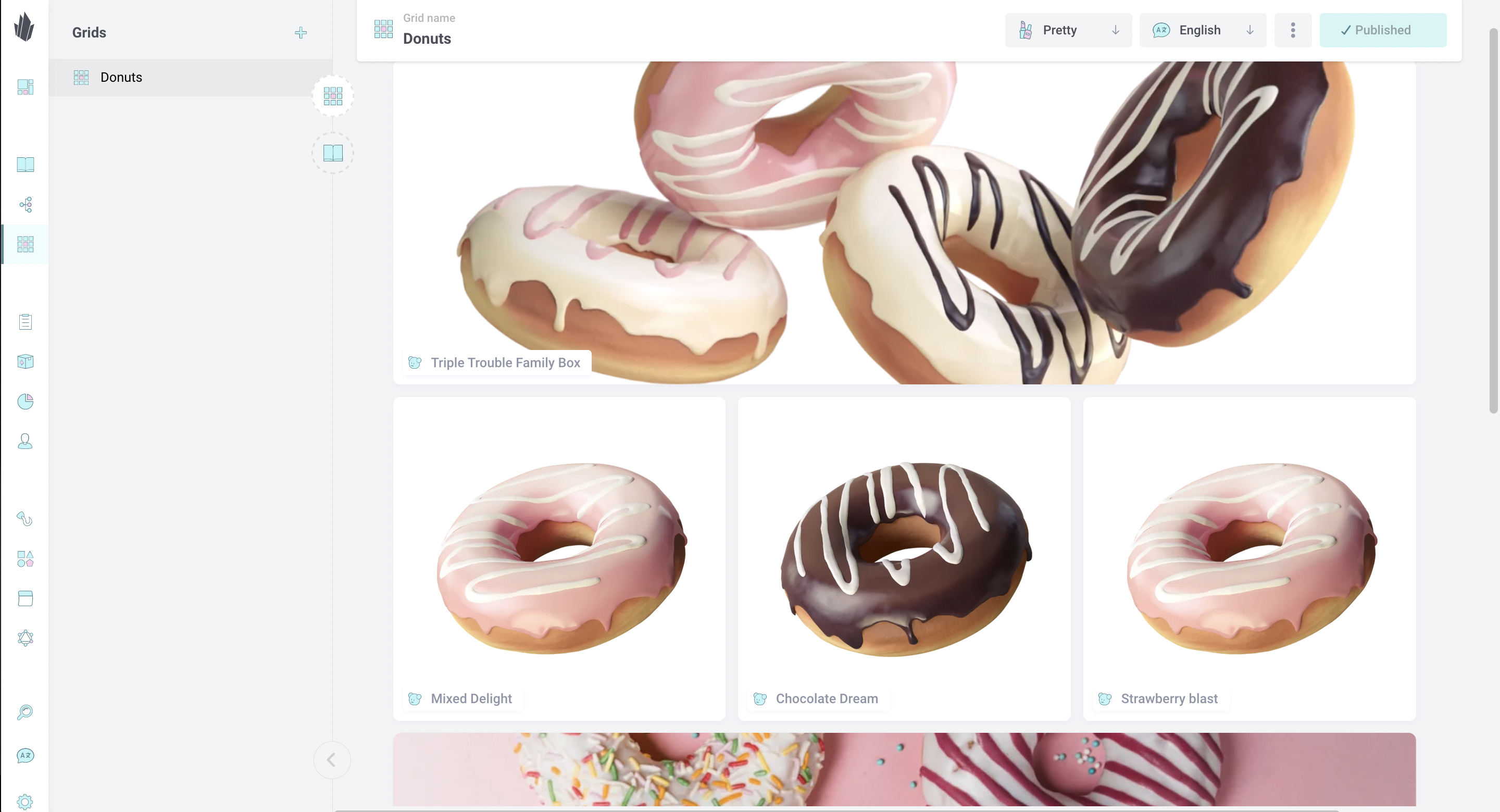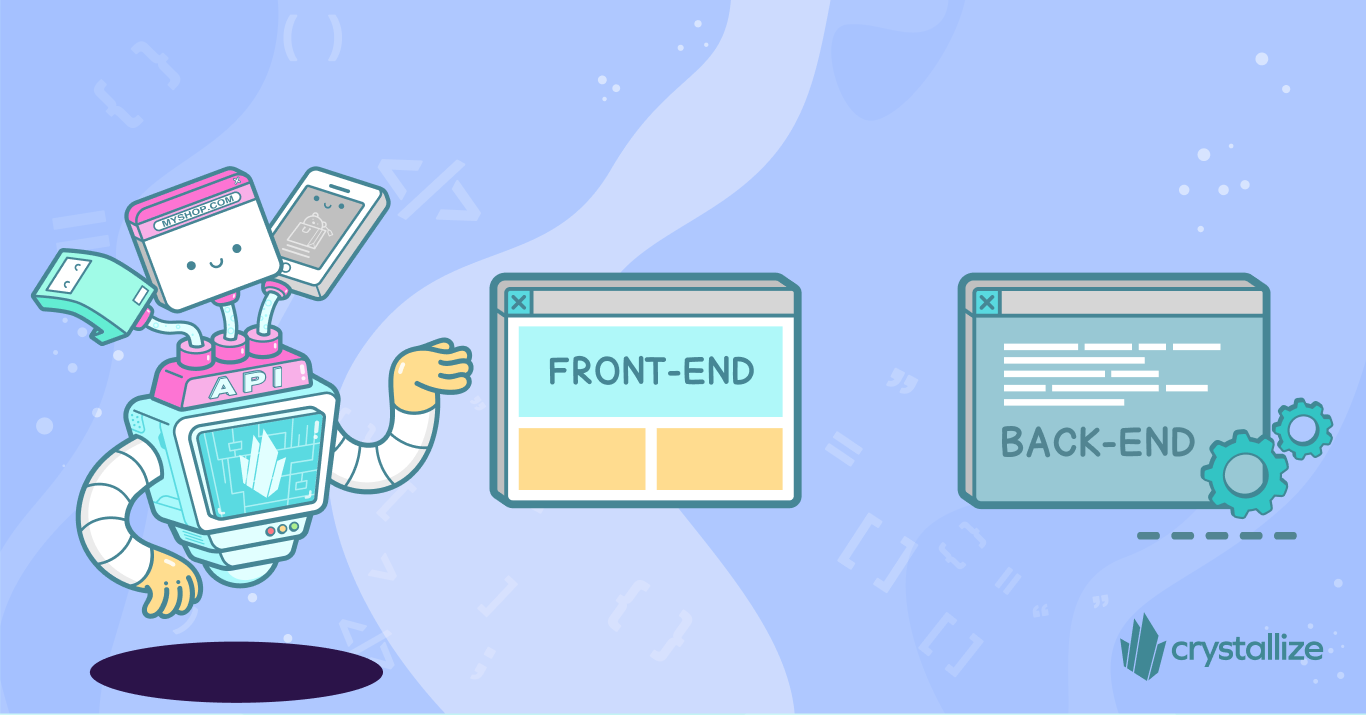What is PIM, and Why Do You Need It?
Having solid product data isn't just about making sales; it's about building trust and driving growth. Many businesses are turning to Product Information Management (PIM) systems to meet these evolving needs.

Selling products today is a lot more complex than it used to be. Customers interact with brands across numerous touchpoints, seeking information from various sources before purchasing; they look for product videos and reviews, consult TikTok and Instagram influencers, compare price and usage with other brands, and maybe even check them in-store, etc.
In addition to ensuring the quality of their products or services, businesses must ensure their technology infrastructure aligns with their business goals to stay competitive. A key challenge is combining essential product information with marketing and sales data to deliver enhanced product experiences across all channels and touchpoints, giving businesses a competitive edge.
How do you do that? Well, start by arming yourself with the right tool for product information management.
What Is PIM?
Product information management is the process of managing and curating the product information required to store, catalogue, market, and sell products.
Product information includes technical information, SKU data, supplier data, marketing assets and descriptions, labeling and categorization, ingredients, packaging, etc. Anything you’d find in the product sheet.
The PIM platform/system is your centralized product information platform from which product data is distributed to all relevant stakeholders, teams, and sales channels. Consider it a central repository that neutrally feeds information about your products to any channel, such as a webshop, e-commerce App, ERP system, or product catalog.
Companies with thousands of products need PIM, but you should consider getting one even if your offer is smaller or mainly if your products include lots of customization or localization.
❓What About Headless PIM?

Modern web development is moving towards a headless approach or headless architecture. Broadly headless is about making a difference between the front end and back end of your website, store, or app.
It allows you to have the best-of-breed approach, i.e., pick and choose solutions with each one specialized for one function (PIM, eCommerce, CMS, search, payment, media management, etc.) to deliver unique functionalities and experiences to potential customers.
In that context, a headless PIM solution means that you have a cloud-based service available at the push of a button that scales with your growth.
Key Features
Features and benefits go hand in hand, so here we'll briefly mention the key features while we offer more explanation from the point of view of benefits.
So, what are they?
- Centralized Product Data Repository that helps you consolidates all product information into a single location, eliminating data silos and ensuring everyone accesses the same up-to-date information. It also helps with data synchronization, data modeling, and access control.
- Data Quality and Enrichment. Using PIM requires implementing rules and checks to ensure the accuracy, completeness, and consistency of product data. It also ensures that product data adheres to predefined formats and standards, facilitating data exchange and integration. PIM also defines policies and procedures for managing product data and ensuring data quality and compliance.
- Easier Channel Management: This feature enables seamless product experiences across all channels, including online, mobile, and in-store. It allows you to publish and tailor product information per channel, focusing on a true omnichannel experience.
- Automated Workflows and Approval Processes. Streamlines product information processes, such as product creation, updates, and approvals, ensuring data accuracy and compliance.
Importance and Benefits of PIM in Today's Digital Landscape
Why use a PIM? Product experience ties into user experience, so it is one of the main factors in determining whether your customers purchase from you or your competitor. 90% of consumers expect consistent product information across all channels – whether browsing online, on a mobile app, or in a physical store (source: PIM stats for 2025).
A great product experience means your product information will be consistent with your marketing messages. Your cross-selling and upselling efforts will be better directed on every channel you use, and your better product information will directly boost sales.

In addition, PIM is very time-efficient. Adding a single new product (one SKU) to a website can require 20–46 minutes of manual work (source: PIM stats for 2025). Instead of wasting your team’s time manually creating, maintaining, and updating the never-ending list of spreadsheets, they can focus on other revenue-generating tasks.
For example, the sales team can easily publish datasheets and price lists; marketing can use any and all product information and deliver it across multiple channels; new products can be easily added to catalogs, making time to market much shorter, etc.
Reduced manual work + Faster product launches = Enhanced Productivity!
The above comes with PIM scalability benefits and growth gains. With PIM managing large catalogs and global expansion becomes easier than ever.
Finally, improved data accuracy and quality. PIM enforces consistency in your product information, ensuring that all stakeholders and relevant teams have the same information and work toward the same goals.
What PIM Is Not (clearing up the acronym confusion in e-commerce)
The demand for accurate, high-quality data is growing exponentially, resulting in numerous systems that organize and manage this data. Understanding these systems' unique focus and capabilities is crucial for selecting the most suitable option for specific business requirements.
It is not easy to keep up with the subtle differences in the meaning of popular three-letter acronyms used in e-commerce today, especially when the concepts are so similar.
For example, PIM is often confused with other product-related tools, such as master data management (MDM), enterprise resource planning (ERP), product lifecycle management (PLM), product experience management (PXM), product data management (PDM), product content management (PCM), data asset management (DAM) and finally content management systems (CMS) and e-commerce.
The following infographic visually compares all relevant terms. Individual posts explore each term and its concept in greater depth.
📝DOWNLOAD THIS👇INFOGRAPHIC AS PDF FROM HERE

How PIM Works?
Before we get into the HOW, let's first discuss what data is stored in PIM. PIM platform essentially manages all product data, and what “all” encompasses will depend on the type of products/services you sell. Having said that, some of the most common data managed in PIM are:
👉 Key product information - Descriptions, titles, SKUs, suppliers, etc.
👉 Technical specs - Measurements, sizes, materials, ingredients, warranties, etc.
👉 Taxonomy - Categories, relationships, product tags, etc.
👉 Marketing information - SEO data, titles, meta descriptions, keywords, buyer personas, etc.
👉 Digital assets - Images, videos, documents, animations, etc.
👉 Sales information - Prices, testimonials, reviews, etc.
👉 Channel-specific information - Google categories, Instagram shopping tags, mobile-specific data and assets, etc.
👉 Localized data - Translations, currency, etc.
Now that we know WHAT, let’s dive into use cases of HOW, i.e., explain it with real-life examples.
PIM for Product Catalogues
A product catalog is a structured approach to storing product information. You can have different categories of products typically organized in a hierarchical tree by keywords or other semantic groupings. Traditionally, when talking about product catalogs, many would think about a printed booklet showing all the products from a company. Or a directory with an endless number of Excel spreadsheets.
Of course, today, you would be more likely to think of a product catalog as a website with all products readily available through navigation and search. Both still apply. In addition, you have new channels for your products, such as voice-activated devices like Amazon Alexa.
PIM is used to create product catalogs that show customers what they can buy. It also has everyday use cases, typically in B2B, where you look up a product to get all its specifications, dimensions, and usage information.
PIM as a Service
A PIM service can be delivered as traditional software that you install on a server on-premise or as a Cloud PIM, or it can be offered as a ready-to-use service with a product catalog that customers can directly use. Think of this as a hosted product catalog.
❓PIM at Crystallize.

You have heard the phrase content is king, right? What most forget to mention is that content sells as well. To market and sell products today, you’ll need an eCommerce and a rich content management solution, i.e., CMS.
At Crystallize, we handle all the content you need to market and sell your products in any channel. Traditionally, this is placed in a PIM and a CMS, but it is two sides of the same story for us. You need structured product data and rich marketing content when telling product stories, which is the Crystallize approach.
Learn more about PIM in Crystallize.

PIM for e-commerce
The heart of any eCommerce business is the products it sells. Today, the PIM platform that handles product information can quickly gather, organize, enrich, and distribute product data across various distribution channels, including your e-commerce shop, online marketplaces, social media, etc. You can typically define different types of products and manage the rich content required to create an engaging shopping experience. Still, you also handle order fulfillment and, in some cases, subscriptions.
There is no comparison between PIM and eCommerce. Although PIM has many applications in e-commerce, its essential features are reducing manual data entry, simplifying data extraction, and enabling ease of multichannel scaling.
Hmm… Is the multichannel approach that important?
Well, that’s for you to decide, but let us just say this: multichannel shoppers spend three times more than single-channel shoppers. I’m sure you’ll agree that’s very significant.
Industry Use Cases
E-commerce and retail are major beneficiaries of PIM implementation due to their reliance on extensive and accurate product information. However, the advantages of a PIM system extend to any industry that depends on omnichannel product content and rapid product onboarding.
This includes sectors like manufacturing, distribution, Consumer Packaged Goods (CPG), B2B, and even service industries that offer product-related information, complex product specs, or reseller catalogs.
Challenges and Drawbacks
The platform you use has drawbacks, such as whether it can meet your needs. However, there are three potential problems overall.
For one, customization goes both ways. It depends on your product and the PIM platform's ability to be customized for your use case. It starts with data/content modeling and structure (product attributes, taxonomy, product mapping, etc.) and how easy or hard it is to do so.
Integration for two. Some PIMs can be challenging to use because they weren't all designed to integrate with your tech stack. System integration and API connections come into play, possibly not in the way you want them to.
The learning curve for three. Simply put, the above potential drawbacks lead to a steep learning curve.
How to Choose the Right PIM Solution?
Start by defining your main pain points. What are the biggest problems that a PIM would help you solve? Is it to free up time for your team? Is it to speed up the time-to-market of new products? Is it to more easily and quickly scale your eCommerce business?
By doing this, your search for a suitable PIM will be better directed, and whichever one you choose will help deliver on your KPIs.
Remember to consult your tech team and discuss your current tech infrastructure. You should strive for full integration, where your platforms can directly connect to the PIM. This is especially true if you wish to go headless.
Once you have those requirements pinned down, choosing your PIM will be pretty simple - just like your product management after you implement it 😉
🔍Compare Crystallize with other leading PIM platforms!
At Crystallize, we believe in providing everything you need to showcase your products seamlessly across all channels by combining PIM, commerce, and CMS functionality.
We know that one size doesn’t fit all, so we’ve created tech comparison pages to give you a transparent overview of how we stack up against top PIM, commerce, and CMS platforms. These comparisons are designed to help you evaluate features, ease of use, value, and customer support.
Take your time to explore the options👇 We're here to provide the information—the choice is yours!
|
| |||
|
| |||

Future of PIM: What to Expect Beyond 2025?
Beyond 2025, Product Information Management (PIM) will not only manage product data but will actively shape the customer experience, sustainability practices, and digital commerce landscape, reshaping the entire product storytelling experience.
APIs and headless integration already enable businesses to seamlessly connect PIM with diverse tech stacks, IoT ecosystems, and emerging commerce channels like AR/VR and voice commerce. Granted, richer, more dynamic media formats will require standardized product information, but this evolution will support immersive, contextual shopping experiences in which products are interactively explored and experienced virtually before purchase.
Then we have AI, already integrated into PIM systems, enhancing automation across data onboarding, enrichment, validation, and contextualization.
Capitalizing on these trends will ensure your business remains competitive and responsive to future market shifts. The next steps in this evolution are real-time data synchronization, decentralized data management through blockchain technology, and hyper-personalization.
It Is Not Just About Product Information Management
Even though e-commerce sales exceeded $1 trillion in 2022 (source), economic uncertainty makes people more cautious about where, when, and how they spend money. On top of that, modern consumers do a lot of research online before purchasing.
No doubt, product information is crucial to purchasing decisions, but it’s not just about that.
The ability to provide potential customers with rich and engaging product storytelling across all touchpoints in their journey is a competitive advantage—a slight nudge in your direction, if you will—that will help you gain those customers over your competitors.
Not sure if you need PIM for your business? Don't worry. We've got you covered.
Book a personalized one-on-one demo today, and we’ll show you what makes Crystallize a powerful PIM well-suited for modern business (maybe even yours).
Or, why not SIGN UP for FREE and start building.
Follow the Rabbit🐰

2025 PIM Statistics: How Product Information Management is Revolutionizing eCommerce?
Tired of product data in Excel sheets, PDFs, and siloed data solutions? Eyeing a PIM platform but not sure how to convince other stakeholders? Good. We have some PIM stats for you to share.

Understanding Product Information Management (PIM) Done Headless
A headless approach to PIM means having a service ready to manage product information in seconds. Product information and content are delivered via an API. There are no templates, no web pages, only structured content—pure developer bliss.

What Is Headless Commerce? Definition, Benefits, and When It’s Worth It
Headless commerce separates your storefront (front end) from back-end commerce logic, connected via APIs. It lets you ship faster, customize freely, and sell across web, apps, social, and in-store screens without back-end bottlenecks.
